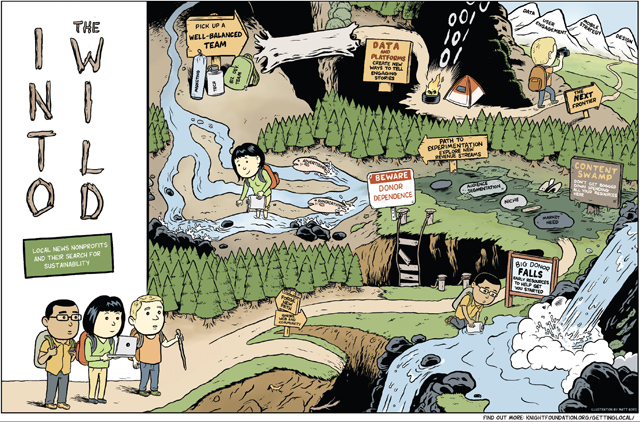
More recipes for success of nonprofit news ventures
The latest cookbook for nonprofit news ventures comes today from the Investigative News Network, supported by Knight, is an eclectic mix of big, small, old, new, national, local, digital, print, neutral and progressive nonprofit news organizations. As you might expect, its recipes for success are as varied as sushi and Boston baked beans.
The white paper, Audience Development and Distribution Strategies, was written by digital news expert Elizabeth Osder. It is similar to our earlier reports on nonprofit news success, but also offers new advice, excellent context and fresh views from the nonprofit news leaders themselves.
Its thrust: the story is not the only thing that matters in news. Explains Margie Freigvogel, editor of the St. Louis Beacon: “We started with a passion for journalism coming out of a newspaper background and we found ourselves running a business and technology enterprise.” The Beacon started in 2008 to create “a better St. Louis powered by journalism” and is still going strong.
These folks are, in my mind, heroes. Many started their new digital news ventures just in the past five years, as print newspapers have been shrinking and a lack of creative change in public broadcasting has so far failed to fill the gap. These new news leaders really care about informed and engaged communities. Suddenly, through their own web sites and their traditional media partners, they are reaching many millions of people. Someone should add up that number: It’s big.
These newcomers are doing quite well. In their first year, the report says, 75 percent of all new nonprofits registered in the United States fail. Here is my summation of the reasons for this epidemic of crib death: Bad planning and management that creates too much growth with too little money from too few sources. By a standard failure rate of 75 percent, these new news ventures have been stunning successes. Maybe some journalists really can command enterprises. Certainly, Pulitzer, Hearst, Gannett, Scripps and Knight could, and they kept up with business and technology as well as the news.
The INN white paper offers a model five-year cash plan. My opinion: the foundation category is still too large in that model. Foundations give away only a little more than one of every 10 dollars donated in America. “Viewers like you,” not foundations, keep public broadcasting going: That’s the nation’s biggest nonprofit news model. New ventures that think this way are doing well. The Texas Tribune has cut foundation donations fast. Good for them. Just look at all the cool stuff you get as a TT Member. The report rightly notes that news people must let communities help decide the news agenda. The lasting relationship here is between journalist and community, not between news people and foundations.
Sadly, the report has too much nonprofit rhetoric. The only “stakeholder” I’ve ever found even remotely entertaining is Buffy the Vampire slayer. What I hope she is doing with that stake is burying it in the heart the copyeditor who fails to kill meaningless words like “stakeholder.” This is a problem all of us face, including Knight. See “Bad Words For Good, How Foundations Garble Their Message and Lose Their Audiences.” If the new digital news folks think they have to have “outcomes,” “sustainability” “drivers,” “levers” and the like, God save local news. What they should do is correct the rest of us when we lapse into such vague, lazy, unclear talk.
Back to the main point: The Investigative News Network is looking good. Under CEO Kevin Davis, INN has doubled in size to more than 60 members since its launch just a couple of years ago. It focuses on providing business and technology services for the fledgling new organizations. Knight Chair in Investigative and Enterprise Reporting Brant Houston, former head of Investigative Reporters and Editors, is a co-founder. Chuck Lewis and the Investigative Reporting Workshop at American University has tracked the progress of the ventures.
This is all more important than ever as traditional media face continuing cash declines as they convert to the smaller advertising revenues of digital delivery while still holding on to the cost structure of print products. Eventually, most printed newspapers will go the way of the Encyclopedia Britannica, but the transition is still a ways away. At Knight’s urging, Phil Meyer’s Vanishing Newspaper took the household penetration trend line to zero for the home-delivered, paid-subscription American daily newspaper to see when the last of that particular type of newspaper might roll of the press. The statistics said if nothing changed the answer was April 2040.
By Eric Newton, senior adviser to the President at Knight Foundation
Recent Content
-
Communitiesarticle ·
-
Communitiesarticle ·
-
Communitiesarticle ·


